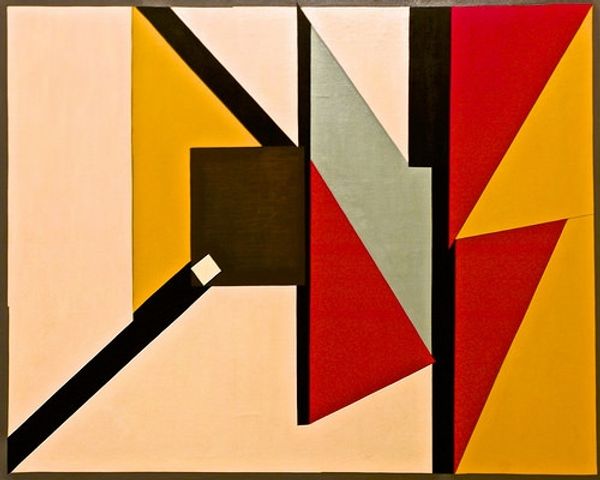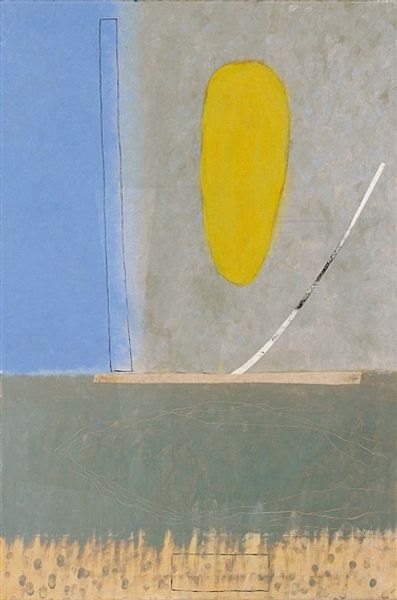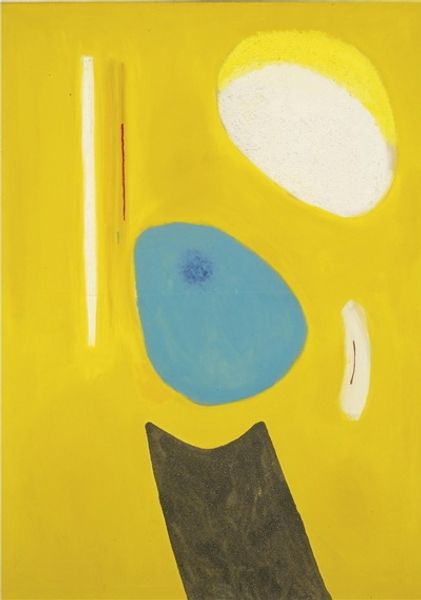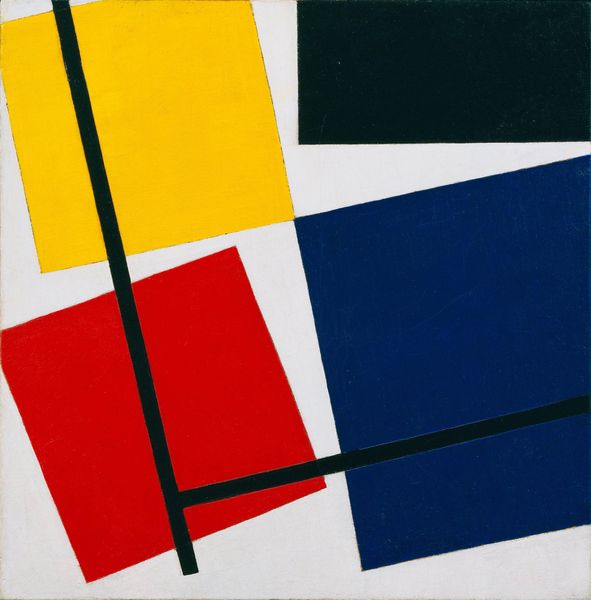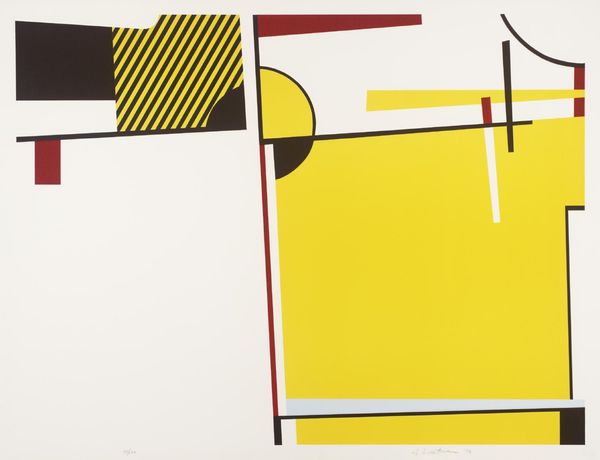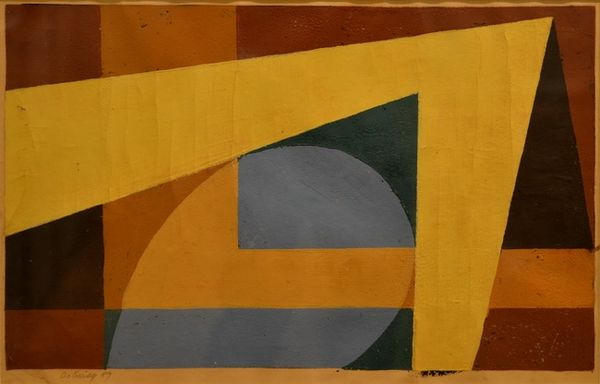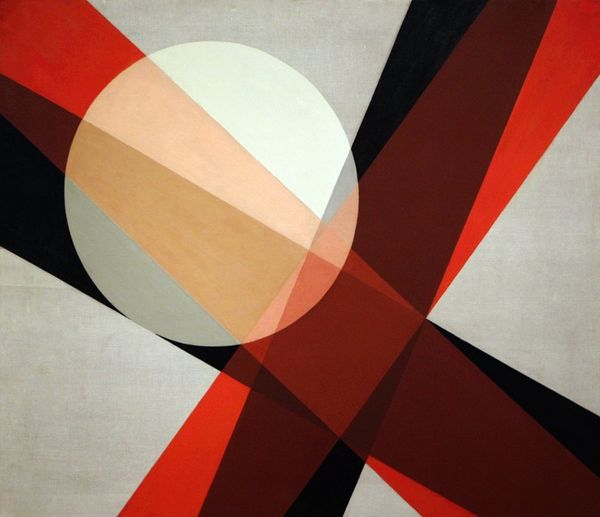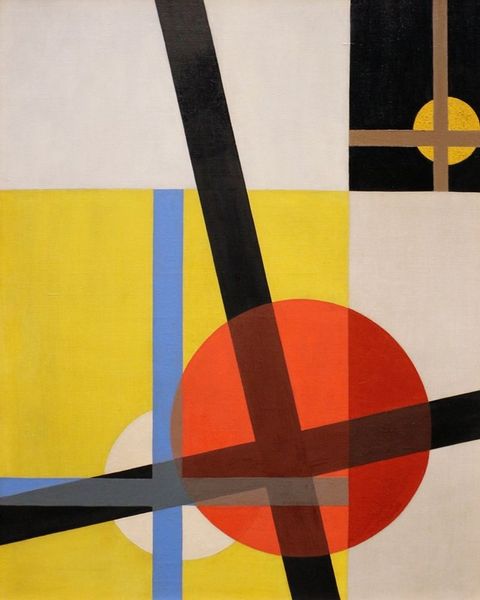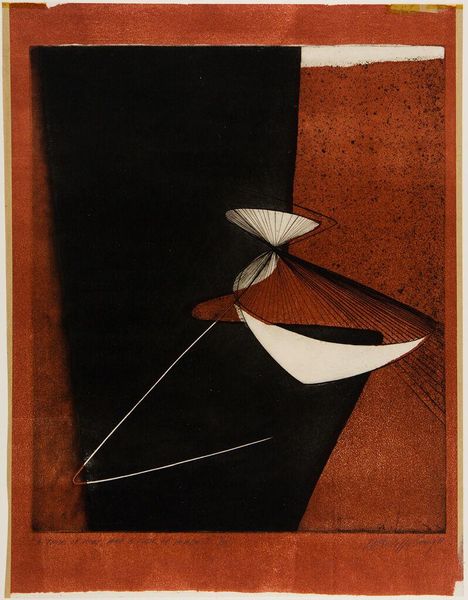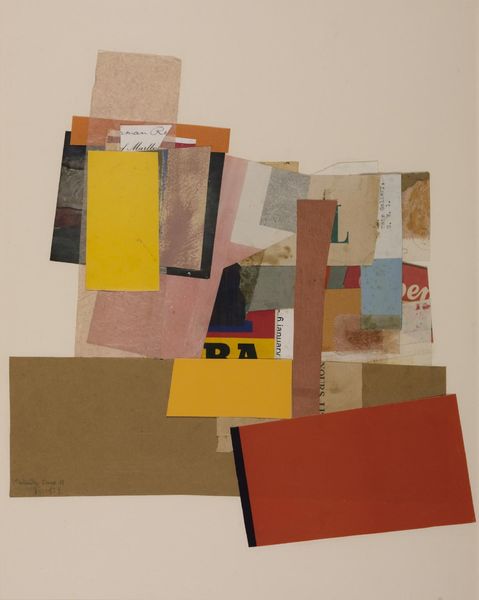
acrylic-paint
#
constructivism
#
acrylic-paint
#
geometric
#
geometric-abstraction
#
abstraction
#
line
#
modernism
Copyright: Public domain
Curator: Before us we have "Yellow Circle", an acrylic-on-canvas piece by László Moholy-Nagy. It's striking how he simplifies form. Editor: Yes, it really captures that mid-century optimistic faith in the power of industry and rationalized design. My first thought is how dynamic this seemingly simple composition is, all these clean lines creating visual tension against that big central yellow circle. Curator: The dynamism you observe really speaks to Moholy-Nagy’s constructivist leanings, the integration of art with industrial design, photography, and typography as agents of social change. There is also his time spent teaching at the Bauhaus, reflecting that design school's ambition to unify art and technology. Editor: Absolutely. That circle anchors everything, but the other geometric shapes cutting across it—the sharp lines, triangles, and the semi-transparent quarter circle creating layers and depth—add an intriguing element. Are these geometric shapes meant to imply something, say perhaps a metaphor? Curator: It could certainly be interpreted symbolically. Given the period, perhaps these simple shapes embody utopian ideals about shaping society through geometric order. Abstraction becomes a tool for visual communication aimed at progress. However, its initial exhibition wasn't explicitly political. What we call political can change, or be reassessed later on. Editor: I suppose in our current social-political context, where faith in technology is waning for many, those geometric symbols can take on a more ambivalent meaning, especially the strong colors that could reflect an optimistic face forward that suppresses the more unpleasant aspects of society at the time. Curator: That’s an interesting way of putting it. Looking at it again through your perspective, I wonder to what extent that suppression—that almost sanitized representation—also mirrored, in its own way, the socio-political order and constraints that even utopianism struggles to resolve? Editor: It leaves us pondering what the relationship between ideal visual language and societal realities are, doesn't it? Thank you. Curator: Thank you for helping me look at it from this unique perspective.
Comments
No comments
Be the first to comment and join the conversation on the ultimate creative platform.

